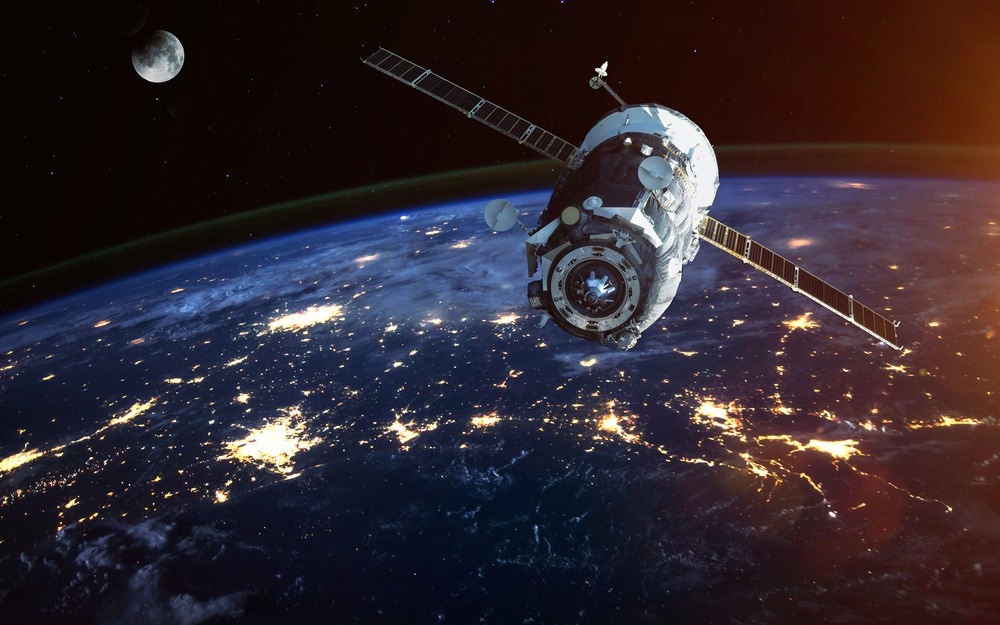A study published in Remote Sensing proposed an on-orbit autonomous geometric calibration method based on the multi-angle imaging characteristics of the directional polarimetric camera (DPC) without ground reference data. The proposed calibration method significantly improves the DPC relative geolocation accuracy and image registration.

Study: On-Orbit Autonomous Geometric Calibration of Directional Polarimetric Camera. Image Credit: Vadim Sadovski/Shutterstock.com
Directional Polarimetric Camera
The directional polarimetric camera (DPC) installed on the Chinese GaoFen-5-02 satellite can detect multispectral, multi-angle, and polarization. The DPC significantly estimates cloud and atmospheric aerosol parameters when combined with the polarization-based inversion model of atmospheric properties.
In addition to high radiation and polarization detection accuracy, high-precision geolocation and image registration are crucial to maximize the benefits of DPC's multispectral and multi-angle polarization detection.
Therefore, high-precision geometric calibration is required to establish the mapping connection between image points on the instrument's 2D image plane and object points in 3D space.
Geometric Calibration of Spaceborne Equipment
The geometric calibration of spaceborne optical equipment is divided into the pre-launch laboratory and on-orbit geometric calibration.
The laboratory-calibrated geometric model parameters cannot accurately characterize the geometric performance of the optical instrument in orbit due to the intense vibrations experienced during launch and the disparity between the on-orbit and laboratory environments.
Therefore, high-precision on-orbit geometric calibration plays a significant role in the accuracy of on-orbit observation data from spaceborne optical sensors.
Conventional On-Orbit Geometric Calibration Methods and Their Limitations
Conventional on-orbit geometric calibration methods are based on the reference data of highly accurate ground calibration fields. As a result, the satellite can only calibrate when it passes over the calibration field, significantly limiting its accuracy and timeliness.
Since the calibration field is often just tens to hundreds of kilometers in size, it cannot be utilized for the geometric calibration of the complete on-orbit spacecraft.
On-Orbit Autonomous Geometric Calibration Method
To address conventional methods' shortcomings, it is vital to investigate an on-orbit geometric calibration approach that does not require ground calibration reference data.
In recent years, researchers in satellite remote sensing have been more interested in autonomous on-orbit geometric calibration approaches. However, there is limited research on the autonomous on-orbit geometric calibration of instruments like DPC with low resolution, wide field of view, and area array imaging.
Using Autonomous Geometric Calibration Method on Directional Polarimetric Camera
In this study, researchers constructed a geometric model of on-orbit imaging based on the imaging characteristics and the collinear equation of DPC. The geometric model of on-orbit imaging categorizes and assesses the model's inaccuracies.
Then, an on-orbit autonomous geometric calibration method is developed for the directional polarimetric camera based on the multi-angle observations made by the DPC without a ground calibration field.
The method consists of three steps:
- Preprocessing DPC's original image, orbit parameters and satellite attitude.
- Using the scale-invariant feature transform (SIFT) approach to find homologous spots in multi-angle images.
- On-orbit optimization of geometric model parameters using least square theory.
Lastly, relative geolocation accuracy and the image registration performance before and after on-orbit geometric calibration were examined and analyzed using the coastline crossing method (CCM) and the SIFT algorithm to verify the effectiveness of the proposed method.
Significant Findings of the Study
The relative geolocation inaccuracy increased with increasing FOV before calibration, whereas the relative geolocation accuracy remained constant with increasing FOV following the on-orbit geometric calibration. This proved the effectiveness of the proposed method in enhancing DPC on-orbit relative geolocation accuracy.
After on-orbit calibration, the multi-angle image registration, multispectral image registration and relative geolocation achieved subpixel level (<1.7 km) accuracy of 1.530 km, 0.650 km and 1.275 km, respectively.
Following the on-orbit autonomous geometric calibration, the DPC projection results were more consistent with the reference coastline data.
The geometric parameters derived by the proposed method were consistent with the actual on-orbit data compared to the laboratory geometric parameters.
Limitations and future recommendations
There were still errors in image registration and relative geolocation after on-orbit geometric calibration due to:
- The deviation between the actual and the geometric model of DPC on-orbit imaging;
- Interpolation and measurement error of orbit and attitude data;
- Coastal subpixel positioning algorithm error;
- Error in the image registration algorithm; and
- Self-Influence of the proposed method's accuracy
Therefore, further research on the issues mentioned above is required to boost the precision of DPC. In addition, the long-term variation features of DPC geometric model parameters, relative geolocation accuracy, and image registration performance must be further evaluated and analyzed.
Reference
Xiang, G., Meng, B., Tu, B., Lei, X., Sheng, T., Han, L., Luo, D., & Hong, J. (2022). On-Orbit Autonomous Geometric Calibration of Directional Polarimetric Camera. Remote Sensing. https://www.mdpi.com/2072-4292/14/18/4548
Disclaimer: The views expressed here are those of the author expressed in their private capacity and do not necessarily represent the views of AZoM.com Limited T/A AZoNetwork the owner and operator of this website. This disclaimer forms part of the Terms and conditions of use of this website.